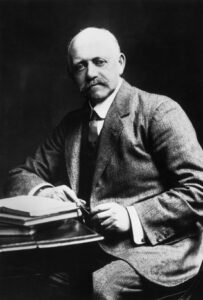By Suzanne Sparrow Watson
 Yesterday marked the beginning of Daylight Saving Time, an annual event that causes grousing throughout the world from people who wonder where they go to get their lost hour back. And no wonder. Daylight Saving Time (DST) has been linked to negative health consequences that include increased risk of heart attack, traffic accidents, sleep disruption (duh!), mood changes, depression, weight gain, and cluster headaches. Not to mention getting called out by the boss for being late to work. As a resident of Arizona, I no longer have to worry about DST, as our state, as well as Hawaii and several U.S. territories in the Pacific Island region, don’t believe in such tomfoolery. We get enough sun during the summer to last the whole year – we don’t need to have any more “sunshine saving” when it’s 110 degrees outside. But why does most of the world observe DST? Turns out, it all started with a man and his golf game. That always spells trouble.
Yesterday marked the beginning of Daylight Saving Time, an annual event that causes grousing throughout the world from people who wonder where they go to get their lost hour back. And no wonder. Daylight Saving Time (DST) has been linked to negative health consequences that include increased risk of heart attack, traffic accidents, sleep disruption (duh!), mood changes, depression, weight gain, and cluster headaches. Not to mention getting called out by the boss for being late to work. As a resident of Arizona, I no longer have to worry about DST, as our state, as well as Hawaii and several U.S. territories in the Pacific Island region, don’t believe in such tomfoolery. We get enough sun during the summer to last the whole year – we don’t need to have any more “sunshine saving” when it’s 110 degrees outside. But why does most of the world observe DST? Turns out, it all started with a man and his golf game. That always spells trouble.
One of the first people to advocate adjusting the clock seasonally was a British builder named William Willett. He had noticed that few people were out in the early morning light during the summer because their clocks indicated it was too darn early to be up. More importantly to Willett, his golf games often ended early because it became too dark to play. So in 1907 Willett started a campaign to “save” daylight by adjusting the time. He published “The Waste of Daylight,” in which he suggested changing the clocks at 2 a.m. on Sundays during the spring and fall — something we still do today. But, unlike today, the transition was to happen 20 minutes at a time over the course of four weeks, twice a year, for a total of eight time changes each year. And rather than an even hour, the time difference would be 80 minutes. Willett’s proposal was considered in the British House of Commons in 1908, but it was soundly rejected. Who in the heck wanted to change the time eight times a year?!
 But during World War I many countries were looking for new ways to save money. Inspired by Willett’s original proposal, which had included estimated savings in electricity costs, Germany and Britain implemented “Summer Time” in 1916, changing the clocks just one hour twice a year. Ironically, Willett died of influenza in 1915, so he didn’t live to see his idea come to fruition. The United States first observed daylight saving time on March 31, 1918. Originally scheduled for six months of the year, it was extended by Congress in 2005 to eight months.
But during World War I many countries were looking for new ways to save money. Inspired by Willett’s original proposal, which had included estimated savings in electricity costs, Germany and Britain implemented “Summer Time” in 1916, changing the clocks just one hour twice a year. Ironically, Willett died of influenza in 1915, so he didn’t live to see his idea come to fruition. The United States first observed daylight saving time on March 31, 1918. Originally scheduled for six months of the year, it was extended by Congress in 2005 to eight months.
 According to the most recent polling, most people aren’t feeling great about DST. More than 40 states have passed legislation to make either daylight saving time or standard time permanent. The problem is that states don’t have the authority to actually stop the clocks from moving forward or back. That authority rests with Congress. Senator Marco Rubio and Rep. Vern Buchanan have tried several times to make daylight saving time permanent with the “Sunshine Protection Act”. While the Senate has passed the bill, it has stalled before a House vote and has never gone before President Biden to be signed into law. Given the ability of our elected representatives to agree on anything, I’m not sure the Sunshine Act will ever see the light of day.
According to the most recent polling, most people aren’t feeling great about DST. More than 40 states have passed legislation to make either daylight saving time or standard time permanent. The problem is that states don’t have the authority to actually stop the clocks from moving forward or back. That authority rests with Congress. Senator Marco Rubio and Rep. Vern Buchanan have tried several times to make daylight saving time permanent with the “Sunshine Protection Act”. While the Senate has passed the bill, it has stalled before a House vote and has never gone before President Biden to be signed into law. Given the ability of our elected representatives to agree on anything, I’m not sure the Sunshine Act will ever see the light of day.
 The upside of changing clocks is that there has been a tandem effort to remind people to change the batteries on their smoke detectors at the same time they change their clocks. Because we don’t observe DST in Arizona, I guess I am throwing caution to the wind and will have to suffer the consequences when my units start to chirp – inevitably at 2 a.m.
The upside of changing clocks is that there has been a tandem effort to remind people to change the batteries on their smoke detectors at the same time they change their clocks. Because we don’t observe DST in Arizona, I guess I am throwing caution to the wind and will have to suffer the consequences when my units start to chirp – inevitably at 2 a.m.

Suzanne, I had no idea about the long and complex history of DST! And very glad I live in AZ and don’t need to worry about it!💛
As always a great and informative read. Thanks